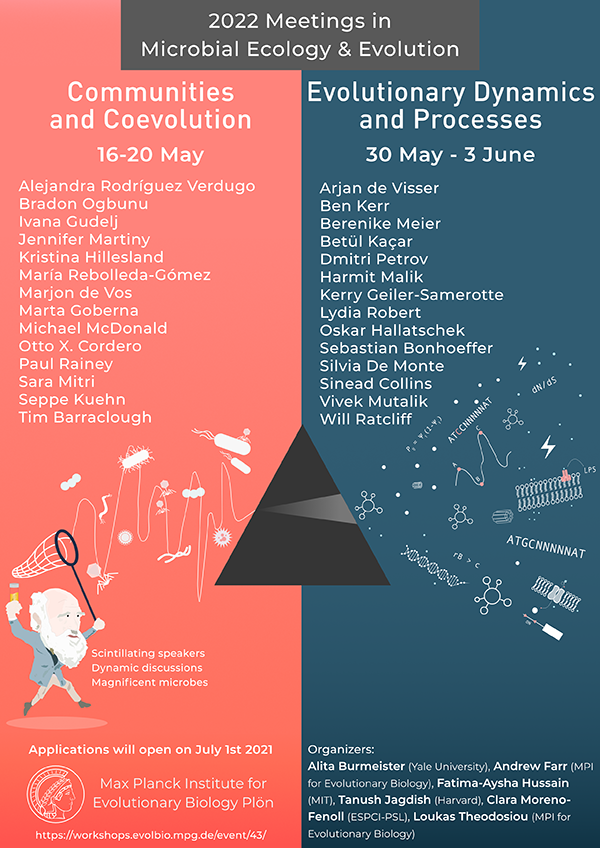Speaker
Description
Bacteriophage integrated in bacterial chromosomes (prophages) can act as mobile genetic elements, making them important drivers of rapid bacterial evolution. The Pf phages are filamentous Inoviruses that are integrated in most Pseudomonas aeruginosa genomes and they are unusual because they can reproduce without lysing their host. Pf prophage particles have been shown to contribute to P. aeruginosa fitness during human infections, but less is known about their role in evolution within bacterial populations. We conducted an evolution experiment with P. aeruginosa strain PA14 in media containing nutrients found in the airway of persons with cystic fibrosis and identified extremely high levels of Pf5 phage in one population after only 12 days. This high copy number was caused by selected mutants in the Pf prophage repressor gene (pf5r), which led to excision and replication of the Pf genome as well as replication of an insertion (IS) element located upstream of the prophage region. This uncontrolled prophage replication was costly to the host cell, reducing both growth rate and yield, yet pf5r mutants were more fit in direct competition with their ancestor. Further, co-culturing mutants with other genotypes, including those containing other beneficial mutations, led to their superinfection of mutant, hyperactive Pf5. When we isolated newly superinfected clones containing both WT and mutant pf5r prophage, the few generations of growth required to sequence these genomes was sufficient to select for further phage diversification. Remarkably, multiple independent lineages of cheater (i.e. defective interfering; DI) phages lacking the genes to produce coat proteins rose to high frequency overnight, which shows exploitation of WT phage by cheaters for viral proteins within the host cell. Two major results emerge: first, apparent bacterial clones may in fact harbor diverse intracellular phage populations that dramatically influence fitness phenotypes, and these fitness traits can be rapidly transferred via phage mobilization. Second, these events demonstrate that the relationships between bacteria and prophage can quickly become unstable and remodel evolving microbial communities, which justifies increased attention on prophage in bacterial evolutionary dynamics.

